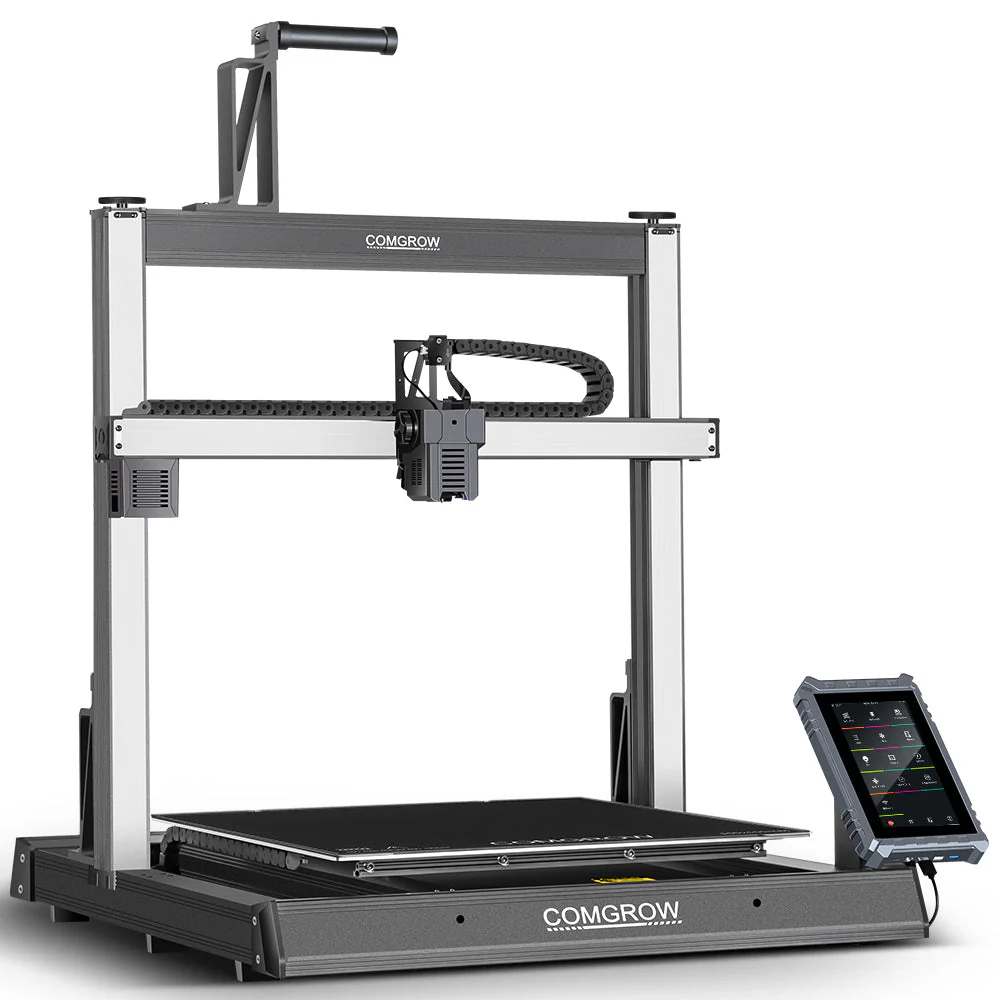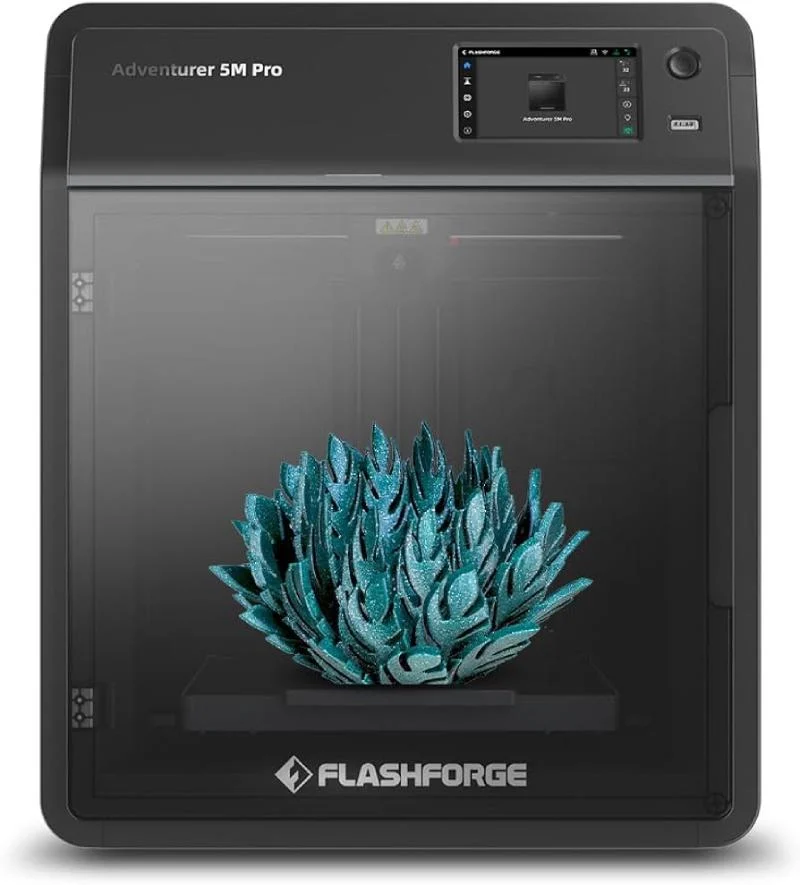Compare Comgrow T500 vs Adventurer 5M PRO
Comparison between the best 3D printers
Choose the best 3D printer at the best price. The cheapest 3D printers are here.
Buy a 3D printer here with 3D Fila.
 |
 |
|
| Model | Comgrow T500 |
Adventurer 5M PRO |
| Printing Material | Filament | Filament |
| Buy Filament for Sovol Comgrow T500 | Buy Filament forFlashforge Adventurer 5M PRO | |
| Estimated price | $799,00 | $599,00 |
| Manufacturer | Sovol | Flashforge |
| Release Year | 2024 | 2023 |
| Print Volume [mm] | 500x500x500 | 220x220x220 |
| Printer Size [mm] | 817x810x962 | 380x400x453 |
| Weight [kg] | 39 | 10,8 |
| Power Loss Recovery | YES | YES |
| Enclosed printer | NO | YES |
| Bed Leveling | Automatic | Automatic |
| Filament End Sensor | YES | YES |
| Bed type | Heated | Heated |
| Power supply system | Direct Drive | Direct Drive |
| Standard nozzle | 0,4 | 0,4 |
| Maximum Nozzle Temperature [°C] | 300 | 280 |
| Maximum Bed Temperature [°C] | 80 | 110 |
| Maximum printing speed [mm/s] | 500 | 600 |
| Filament holder | YES | YES |
| Camera for supervision | NO | NO |
| Recommended filaments | PLA, PETG, Fibra de Carbono, TPU | PLA, PETG, TPU, PLA-CF, PETG-CF |
| Recommended slicers | Creality Print, Cura 5.0 ou superior, Prusa Slicer, Orca | FlashPrint 5 |
| Maximum Resolution [mm] | 0,1 | 0,1 |
| Processor | ||
| Display | 7'' IPS touchscreen, 60Hz | Touchscreen 4,3'' |
| Power Supply | 500 W | 350 W |
| Connectivity | Wifi / Ethernet / USB | |
| Operating systems | Windows, Linux, Macbook | |
| Date of registration in the system | 2024-07-18 | 2024-07-09 |
| Release date | 2024 | 2023 |
| Extra features | The Sovol Comgrow T500 stands out for its large print volume of 500x500x500 mm, ideal for large-scale projects. It has a direct extruder with a gear ratio of 6.5:1, speeds of up to 200 mm/s, and high-performance motors. The 7" touchscreen with Klipper software makes navigation easy. The 49-point automatic leveling ensures a perfect first layer. It also has a full metal hotend at 300°C, linear rails on all axes, and WiFi connectivity. | The Flashforge Adventurer 5M PRO features advanced features such as a CoreXY motion system, direct drive extruder, print speeds of up to 600mm/s and maximum acceleration of 20,000mm/s². It features fast nozzle changes, automatic calibration, active vibration compensation, camera monitoring, time-lapse video, HEPA and carbon filters for particles and VOCs, and an intuitive 4.3-inch touchscreen interface. Ideal for printing materials such as PLA, PETG, ABS and TPU. |
| Support for multiple colors and materials (AMS and CFS) | NO | NO |
Notes * |
||
| Cost-benefit | 7 / 10 | 7 / 10 |
| Hardware | 3.6 / 10 | 4 / 10 |
| Tela | . | . |
| Print volume | 5 / 10 | 3 / 10 |
| Performance | 4 / 10 | 5 / 10 |
Conclusion |
| In evaluating the Comgrow T500 and the Adventurer 5M PRO, several key factors come into play, including price, print volume, features, and overall performance. The Comgrow T500 is priced higher and offers a significantly larger print volume, making it suitable for users who prioritize larger projects. With advanced features like a larger touchscreen display, automatic leveling, and high maximum nozzle temperature, it caters well to ambitious printing tasks. However, its absence of an enclosed design may limit versatility, particularly for certain filament types that benefit from a controlled environment. On the other hand, the Adventurer 5M PRO, while more affordable, boasts impressive printing speeds and advanced features such as a CoreXY motion system and active vibration compensation. This printer is particularly well-suited for quicker print jobs and is enclosed, which enhances its usability for a wider range of materials. The smaller print volume may deter those looking to create larger prints, but its overall performance and user-friendly features are strong points. Both printers received favorable cost-benefit ratings. Ultimately, the choice hinges on user needs: if larger print volumes and high temperature capability are crucial, the Comgrow T500 is the preferable option. Conversely, for those seeking speed, efficiency, and a more compact design, the Adventurer 5M PRO represents an excellent choice. Each printer has distinct advantages, making them suitable for different user requirements in the 3D printing landscape. |

